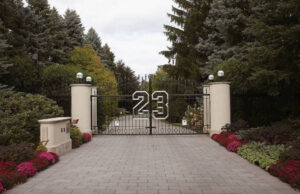In the expansive and often cinematic tradition of American landscape painting, Elena Zaharia’s “Summer in California” stands as a chromatic reverie—neither beholden to realism nor purely impressionistic. Executed in acrylic on canvas, the work channels a season, a state, and a state of mind through the medium of color, gesture, and spatial poetics. In Zaharia’s hands, California becomes more than a place. It becomes a threshold of memory, heat, and atmosphere—rendered not as topography, but as psychological terrain.
Zaharia, a United States–based painter, brings to the canvas an unusual blend of meditative formalism and sensory immediacy. In Summer in California, she unspools her palette not to depict a singular view but to evoke the simultaneous truths of a place that has long stood at the edge of imagination and desire. Her California is a vibration—one that hums with dry air, distant sea salt, and the bleached afterimage of light bouncing off stucco and windshield.
This artwork as posed composition, both intimate and sprawling, is acrylic in medium but oil-like in its depth, capturing the lived tension between surface and depth, between what is seen and what is sensed.
The Architecture of Light
At the heart of Zaharia’s work is light—not merely as illumination, but as structure. In Summer in California, light is the invisible frame. It does not descend but emanates, diffused through layers of pale ochre, warm coral, dusty lavender, and bursts of cadmium yellow. These hues do not compete but collaborate, as if performing a visual symphony in which each tone knows when to whisper and when to resound.
Zaharia’s treatment of acrylic paint harnesses its quick-drying immediacy for emotional effect. She layers translucent washes with opaque stabs of color, creating an environment that flickers between daydream and reality. There’s a rhythm to her strokes—alternating between broad, sun-warped planes and tightly worked micro-surfaces, like flickers of heat above asphalt.
This light is not just weather—it is narrative. It tells of mornings that begin in haze and end in blinding clarity, of long, unhurried afternoons punctuated by distant lawnmowers and the hum of electricity. Her light is as much about texture as it is about tone; it clings to surfaces, clots in corners, and dissolves edges into vapor.
A Nonliteral Landscape: Memory and Mirage
While the title gestures toward geography, Zaharia’s canvas avoids literal landmarks. There are no palm trees lined up in neat succession, no blue Pacific lapping against highway one, no glittering cities. Instead, she offers abstraction as essence—a summoning of landscape through emotional architecture.
One could argue the painting leans into Color Field territory, but it does so without the sterility that sometimes accompanies formalism. Her fields bleed. Her planes pulse. There is movement, not from narrative figures or compositional diagonals, but from temperature itself—warmth pressing against warmth, shade interrupting itself.
Patches of olive green suggest vegetation scorched by drought. Sweeps of powder blue indicate sky, or perhaps swimming pools, or the cool tiles of an air-conditioned kitchen floor. A central ochre burst may read as late afternoon sun catching the façade of a stucco house—or a memory of it.
Here, Zaharia employs abstraction not to obscure but to evoke. The painting’s lack of specificity becomes a form of hospitality, allowing viewers to enter with their own California—be it Bakersfield or Santa Barbara, Venice Beach or a sunbaked hill outside Fresno. This universality within specificity is Zaharia’s most generous artistic gesture.
Material Meditation: Acrylic as Language
Zaharia’s medium of acrylic on canvas is neither incidental nor purely practical. Acrylic, with its capacity for both transparency and density, offers Zaharia a toolkit for emotional layering. The surface becomes a temporal map—a record of decisions, hesitations, revisions. There are places where the brush seems to have lingered, dragged slowly across the grain of the canvas; in other places, the paint is flung in kinetic arcs, producing moments of spontaneous brightness.
Her technique leans into the grain of the canvas, sometimes allowing the fabric to breathe through thinner layers. This embrace of material honesty echoes the dry, honest air of a real California summer. The unvarnished canvas in places becomes a metaphor for the understory of experience—the details beneath the story we choose to tell.
The brushwork ranges from fluid to fragmented. Some edges are sharply defined, anchoring the painting’s otherwise dreamlike tone, while others feather out as though lifted by desert wind. This oscillation between precision and blur further anchors the painting in its subject—California as a place of contradiction: land of both grit and glamour, dryness and deluge, permanence and ephemerality.
A Season as Emotion, a Place as Feeling
Zaharia’s Summer in California does not seek to illustrate the Golden State, but to embody the essence of its seasonal disposition. The California of this painting is not pinned to geography but to emotional climate. In its absence of figures, one finds a fullness of presence—the humming stillness of heat, the intimacy of solitude, the passage of time through shifting light.
There is a narrative silence in the painting that invites projection. You can imagine the screech of tires on a sun-baked boulevard, the drone of a window unit AC struggling against 100-degree heat. You can see the painting as the moment just after a summer storm—steam rising from sidewalks—or as the final glow before twilight. Zaharia offers no clock. Instead, she provides a canvas that seems to exist outside of time, or within all moments at once.
Contemporary Context: Painting Against the Pixel
In an age dominated by digital photography, hyper-realist oil portraits, and algorithmically driven art trends, Zaharia’s work—anchored in acrylic, gesture, and human presence—feels intentionally analog. It is a return to texture in a world of gloss. Her Summer in California does not rely on photographic source material, nor does it chase Instagrammable symmetry. It resists the demand for clarity and gives us atmosphere instead of accuracy.
This is particularly meaningful in the context of climate anxiety, where California summers are increasingly defined by drought, fire, and ecological precarity. Zaharia’s painting does not ignore these realities, but instead refracts them into abstraction—suggesting that even beauty is now haunted. Her palette, warm and full, also edges toward the sepia of memory, hinting at loss and preservation in equal measure.
In this way, her painting belongs not only to the lineage of landscape, but also to the aesthetic of reckoning—a quiet kind of protest against forgetting.
A Stillness That Moves
In Summer in California, Elena Zaharia has created not simply an image, but a condition. This is a canvas that breathes, that holds light like memory, and that asks nothing of the viewer except attentiveness. Its subject is not the grand vista, but the intimate sweep. Not spectacle, but resonance. Through her masterful use of acrylics, Zaharia has conjured not just a summer, but the deep, internal stillness it occasionally permits—the kind that emerges not from absence, but from being fully present in heat, time, and reflection.
To stand before this painting is to feel the ambient weight of sunlight on skin, to remember a silence so full it buzzes. It is to be reminded that summer—especially in California—is not merely a season, but a language spoken in the syntax of shade and shimmer.
And in Zaharia’s dialect, every brushstroke is a syllable, every hue a verb. Together, they compose a poem not of place, but of being in place. And it is here, in this suspended warmth, that Zaharia’s California lives—not as a destination, but as a memory unfolding across canvas.
No comments yet.








